Building a home from shipping containers is a journey that combines design ingenuity with sustainability. These steel structures, originally intended for transporting goods across oceans, now offer a robust canvas for architectural exploration. Shipping containers are celebrated for their strength, modularity, and ease of use, making them an excellent choice for prospective homeowners seeking to craft a unique living space that treads lightly on the earth.
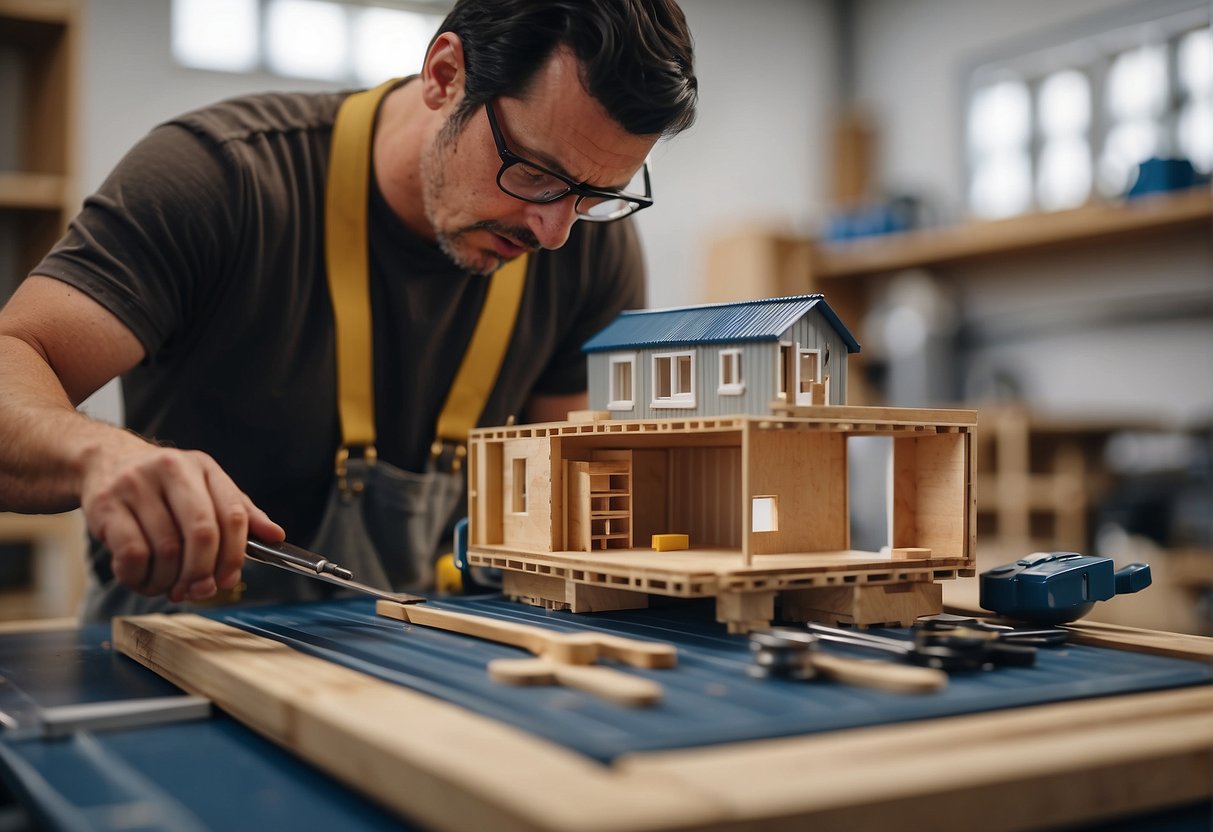
Prior to embarking on this adventure, thorough research into the fundamentals of container home construction is crucial. Aspects such as understanding local zoning laws, choosing the right containers, and preparing the site set the foundation for a successful build. It’s not just about the containers themselves, but also about the design considerations, such as insulation, utilities, and interior layout, that transform a metal box into a comfortable and functional residence.
Attention to detail and an understanding of one’s goals can ensure the process is as smooth as possible. Whether the end result is a simplistic abode or a complex, multi-container home, the principles of eco-friendliness and sustainability are at the core of this endeavor. An informed approach to construction can lead to living spaces that are not only cost-effective and environmentally conscious but also beautifully crafted to the owner’s specifications. With these points in mind, let’s explore essential tips to master the building of a container home.
Understanding Container Homes
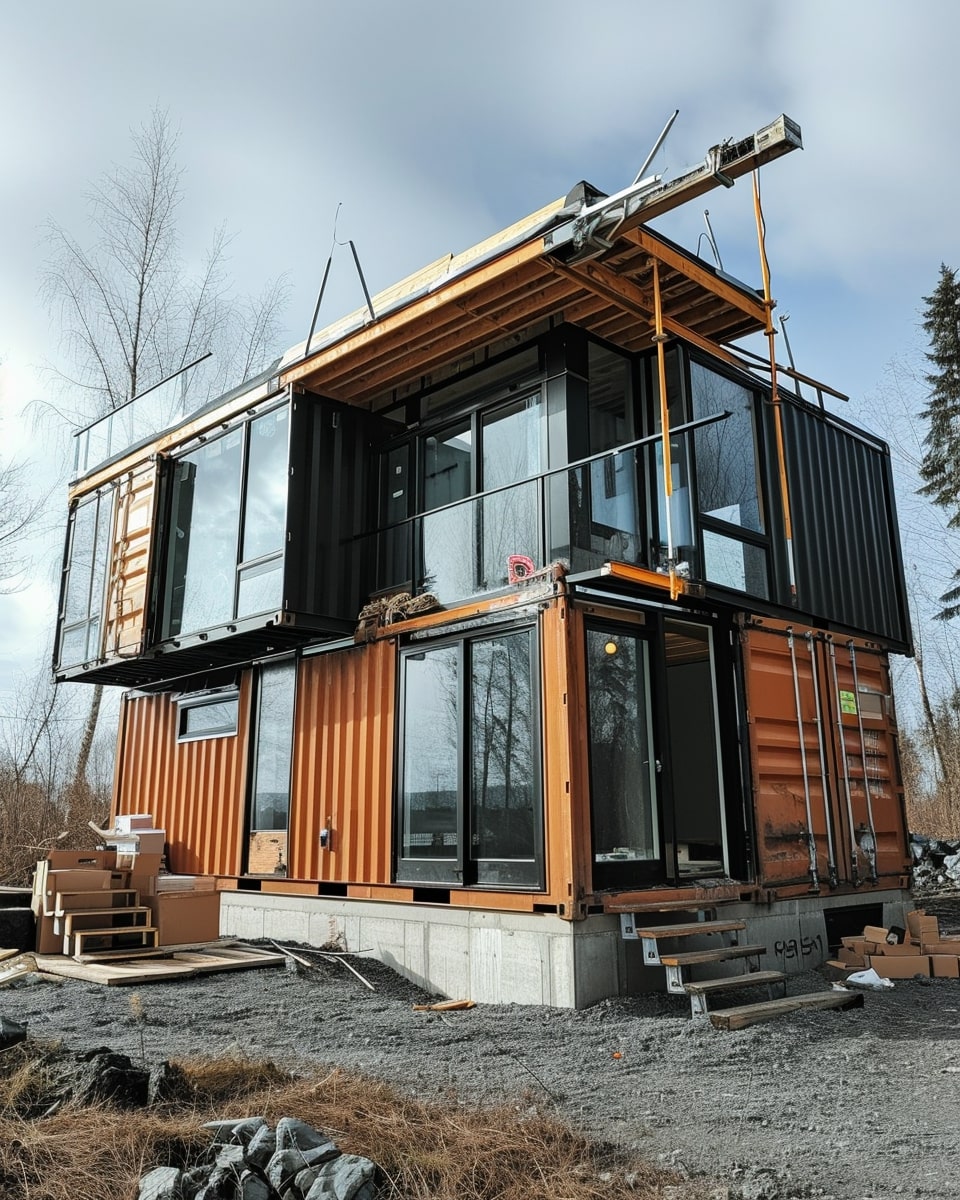
Shipping container homes have risen in popularity, lauded for their blend of affordability and sustainability. With an increase in awareness and evolving perceptions, these structures are now recognized as viable living spaces.
Advantages of Shipping Container Homes
Affordability and Availability: One of the most significant advantages of shipping container homes is their cost-effectiveness. The abundance of shipping containers means they are commonly available at a lower cost compared to traditional building materials. Furthermore, the modular nature of containers allows for more manageable and often faster construction processes.
Sustainability: Shipping container homes also score high on sustainability. Repurposing unused shipping containers as homes reduces the carbon footprint associated with using new construction materials. Container homes are inherently sturdy and, therefore, durable; they are built to withstand harsh conditions at sea, which translates into long-lasting residential structures on land.
Common Myths and Misconceptions
Structural Integrity: A common misconception about container homes is that they are weak and not durable. However, shipping containers are designed to carry heavy loads and resist harsh weather, making them surprisingly strong and suitable for housing.
Temperature Control: Another myth is that shipping container homes have poor insulation and are uncomfortable to live in. In reality, with proper design considerations, container homes can be outfitted with efficient insulation, making them just as comfortable as traditional homes in various climates.
Shipping container homes represent a unique form of housing that embodies innovation in the realm of sustainable and affordable living. As their name suggests, they repurpose shipping containers into habitable spaces, challenging traditional residential design with a modern aesthetic. Despite facing some skepticism, they continue to gain ground among those looking to push the boundaries of traditional construction and environmental responsibility.
1. Designing Your Container Home
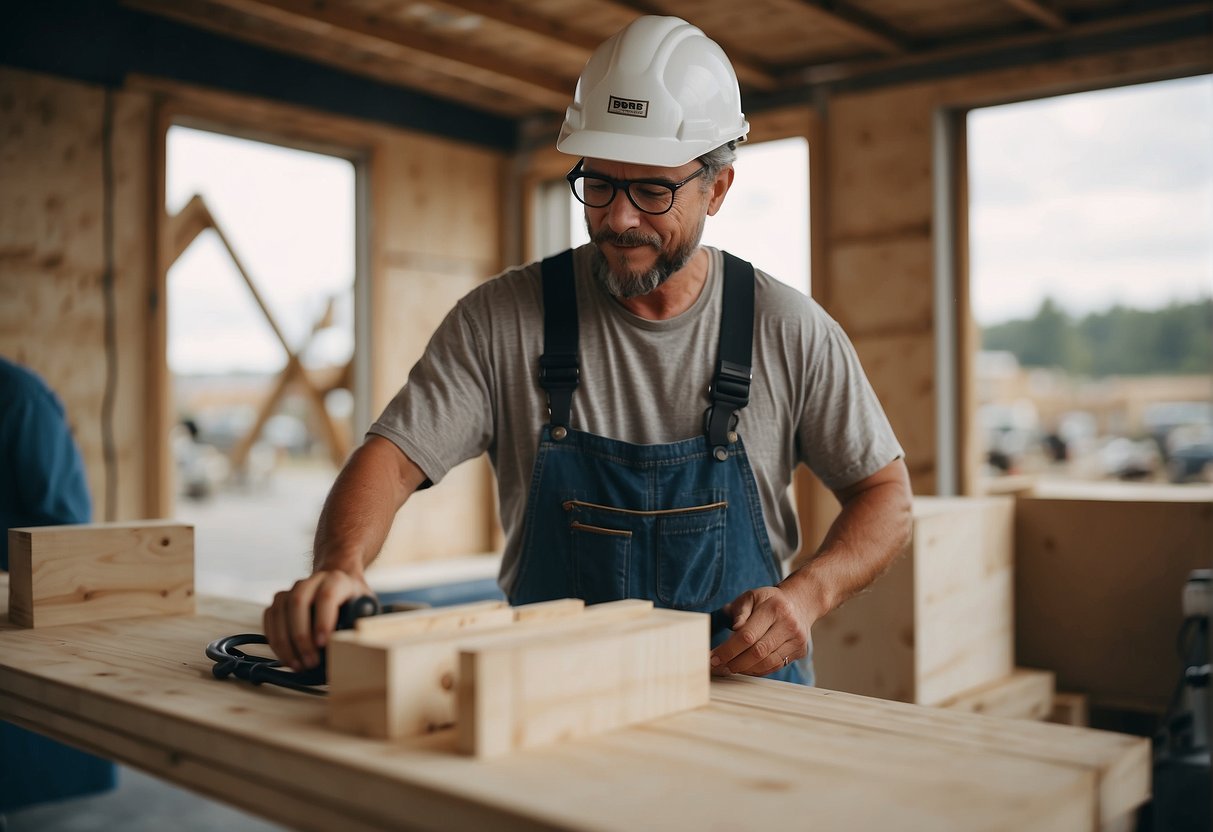
When embarking on the construction of a container home, the design phase is critical as it lays the foundation for the overall functionality and aesthetic of the living space. This encompasses not only the selection of size and layout but also the consideration of natural light, ventilation, and unique design elements that make a container home both eco-friendly and visually appealing.
Choosing the Right Size and Layout
Homeowners should carefully assess their needs to determine the optimal size and layout for their container home. While tiny homes made from a single container offer a minimalist lifestyle, larger families or those desiring more space might opt for multiple containers configured in various shapes. It’s essential to involve an architect or a designer early in the process to ensure that the chosen floor plan aligns with zoning regulations and is structurally sound.
- Single Container Home: Ideal for individuals or couples, offers a compact, minimalist living space.
- Multiple Containers: Can be stacked or arranged side by side for additional square footage and complex designs.
Innovative Design Tips
Container homes are innately customizable. Utilizing cutting-edge design techniques can transform a basic structure into a bespoke residence. Employ fold-out panels or retractable walls for a modifiable living area. Incorporate built-in furniture that doubles as storage to maximize space. For the decor, a mix of high and low elements can provide a personal touch without breaking the budget. Remember, the key to a successful design is maintaining functionality while infusing personal style.
- Built-in Features: Couches or beds with storage, drop-down desks.
- Personal Style: Mix textures and colors, add signature pieces that reflect individual taste.
Natural Light and Ventilation
Maximizing natural light and ensuring proper ventilation are imperative for creating a comfortable and eco-friendly home. Thoughtfully placed windows, skylights, and glass doors allow sunlight to permeate the interior, reducing the need for artificial lighting. Strategic cross-ventilation can be achieved through aligning windows opposite each other, which also helps in maintaining indoor air quality. Where privacy is a concern, frosted or tinted window options offer an ideal balance.
- Window Placement: Install large windows on opposite sides to facilitate cross-ventilation.
- Skylights and Glass Doors: Invite more daylight and offer views of the sky, enhancing the connection to the outdoors.
2. Acquiring Containers and Materials
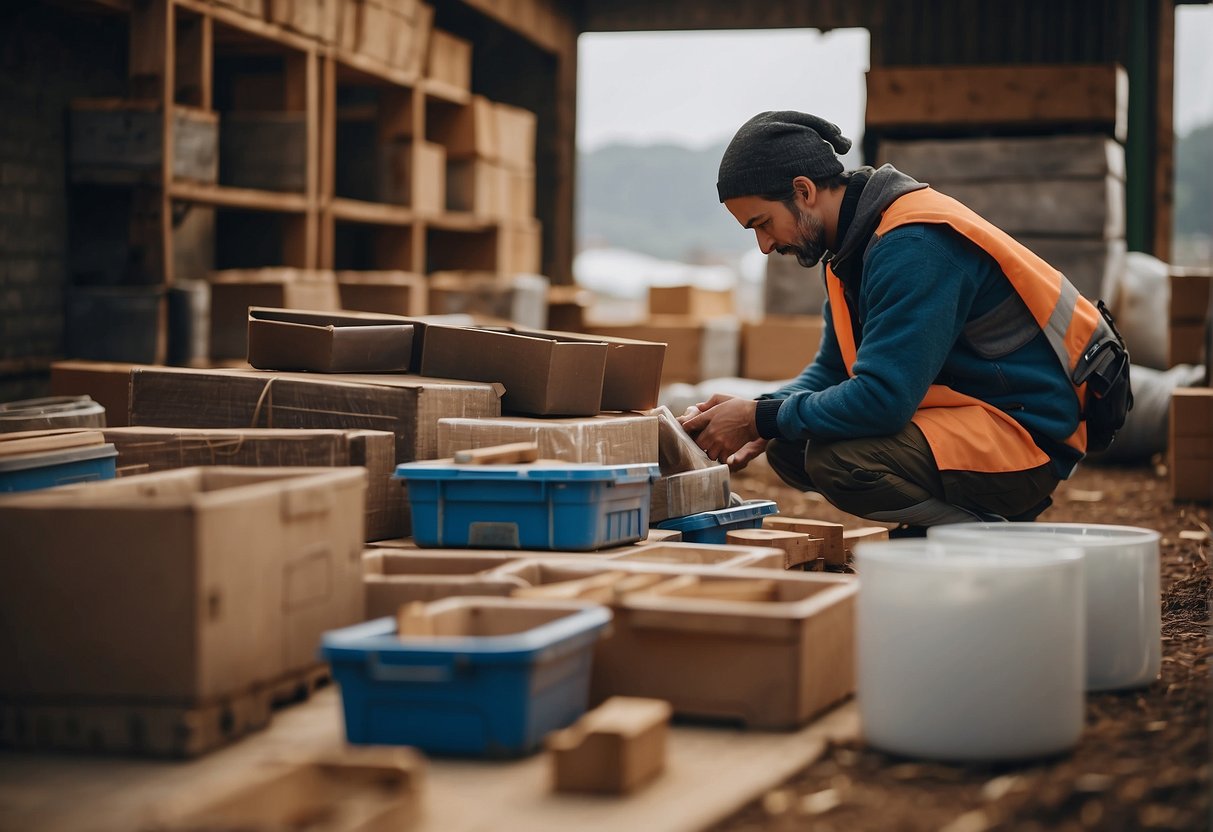
When embarking on a container home project, one’s success begins with the procurement of the right containers and building materials. Selecting high-quality, durable materials for construction and understanding the best places to purchase containers will set the foundation for a robust and sustainable home.
Where to Buy Shipping Containers
Local Dealers and Online Marketplaces:
- One can purchase shipping containers from local dealers who offer the advantage of inspecting units on-site.
- Online marketplaces provide a broad range of options, often including detailed photographs and descriptions.
Prices and Transportation:
- Prices will vary based on size, condition, and location.
- Remember to factor in transportation costs, which can significantly impact the overall budget.
Selecting Materials for Construction
Structural Integrity:
- Choosing steel reinforces strength; ensure the steel is weather-resistant and suitable for the local climate.
- Consider insulation options to enhance energy efficiency.
Sustainable Materials:
- Opt for recycled or eco-friendly materials when possible.
- Use sustainable wood for framing and interior finishes to promote environmental responsibility.
Durability:
- Durable materials will minimize maintenance costs and extend the lifespan of the container home.
- Be aware of materials’ performance in various conditions, particularly if residing in areas prone to extreme weather.
Choosing containers and materials with care is a crucial step in the container home building process. One should always aim for a balance between quality, sustainability, and cost-effectiveness to ensure the longevity and comfort of their future home.
3. Planning and Preparing
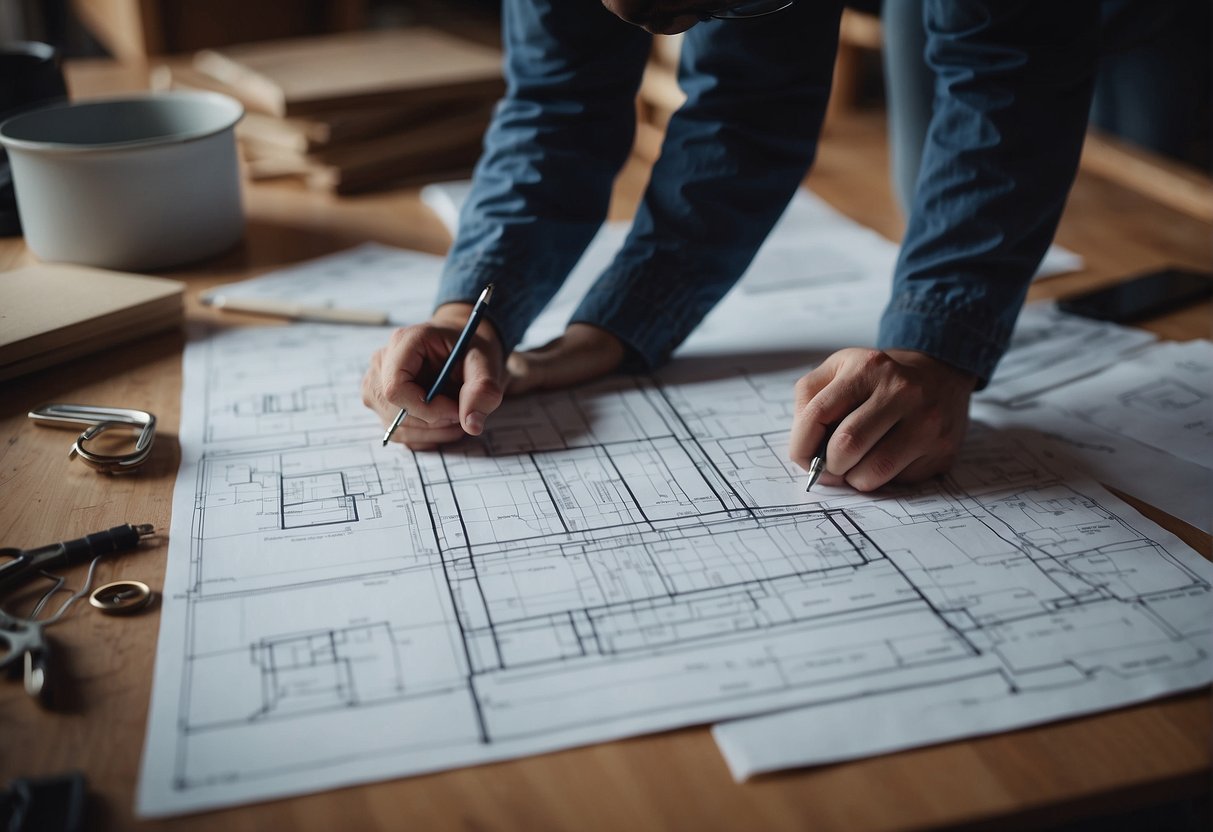
Effective planning and preparation are the cornerstones of successfully constructing a container home. This stage encompasses setting a realistic budget, navigating through various permits and regulations, and ensuring the site and foundation are ready for building.
Creating a Realistic Budget
One’s financial plan must account for all possible expenses, including the cost of the containers, delivery, construction, and finishes. Unexpected costs can often arise, so it’s prudent to include a contingency fund within the budget. An itemized budget helps in tracking costs and staying within financial constraints.
Dealing with Permits and Regulations
Before construction begins, one must understand and comply with local regulations. This includes securing the necessary permits which often involve presenting detailed plans and showing that building codes will be met. Researching and adhering to these regulations is essential to avoid costly mistakes and legal complications.
Site Preparation and Foundation
Preparing the site entails clearing the land, ensuring it’s level, and establishing access for construction equipment. The foundation, a critical part of any building project, must be designed to support the weight of the shipping containers and protect against soil movement. Options include a traditional concrete foundation, pilings, or a slab-on-grade, each with their unique benefits and considerations depending on the site conditions.
4. Structural Considerations
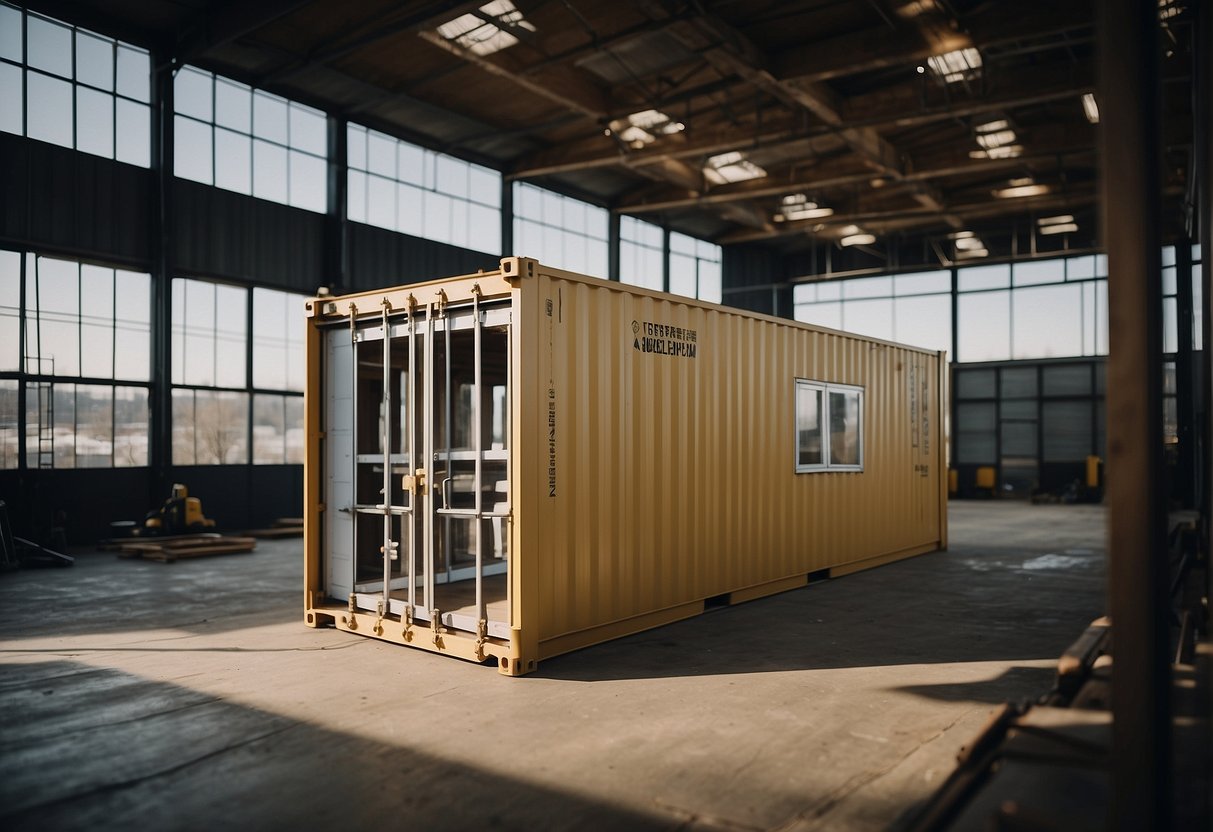
When building a container home, one must meticulously address the structural considerations to ensure safety and longevity. Structural integrity takes precedence, alongside the methods for effectively stacking and connecting multiple containers.
Ensuring Structural Integrity
In constructing a container home, the structure’s integrity is paramount. Architects and contractors must evaluate the strength and durability of the used containers, as modifications can compromise their structural soundness. Critical assessments include checking for rust, dents, and other deformities that might affect stability. It’s imperative that each container is deemed structurally sound before incorporation into the design.
Stacking and Connecting Containers
Exploring multiple containers in a stacked configuration necessitates careful planning. When containers are stacked, the weight must be evenly distributed to prevent structural compromise. Specialized joining methods are required to ensure the cohesion and structural integrity of the overall design. Contractors must utilize reinforcements at connection points to bear the weight and stresses of stacked containers. This ensures the modified structure remains strong and durable over time.
5. Installing Utilities

Installing utilities in a shipping container home requires careful planning and execution. It’s crucial to ensure compliance with local codes and regulations, and to prioritize safety and efficiency.
Electrical, Plumbing, and Gas Systems
Electricity: When wiring the container for electricity, one should adhere to national and local electrical codes. Professional installation is recommended to set up the main electrical panel, outlets, and lighting fixtures. Attention to detail during the electrical installation can prevent safety hazards and ensure energy efficiency.
Plumbing: Plumbing installation is a complex task, typically involving PVC or copper piping. The primary objective is to provide a reliable water supply and waste removal system. Strategically plan the layout to connect sinks, toilets, and showers while allowing easy access for future maintenance.
Gas Systems: For those intending to install gas for heating or cooking, it’s imperative to have a certified professional handle the installation. They can ensure that the gas lines are correctly and safely connected to appliances.
Insulation and Temperature Regulation
Insulation: Proper insulation is essential for maintaining a comfortable internal temperature. Options like spray foam insulation offer excellent energy efficiency and can effectively seal gaps and prevent thermal bridging. Installing insulation correctly contributes to lowering energy costs and improving overall comfort.
Temperature Regulation: To regulate temperature, one may consider installing HVAC systems, ceiling fans, or energy-efficient windows. Reflective coatings and strategic ventilation can also aid in keeping the container home cool in hot climates.
6. Interior and Exterior Finishing
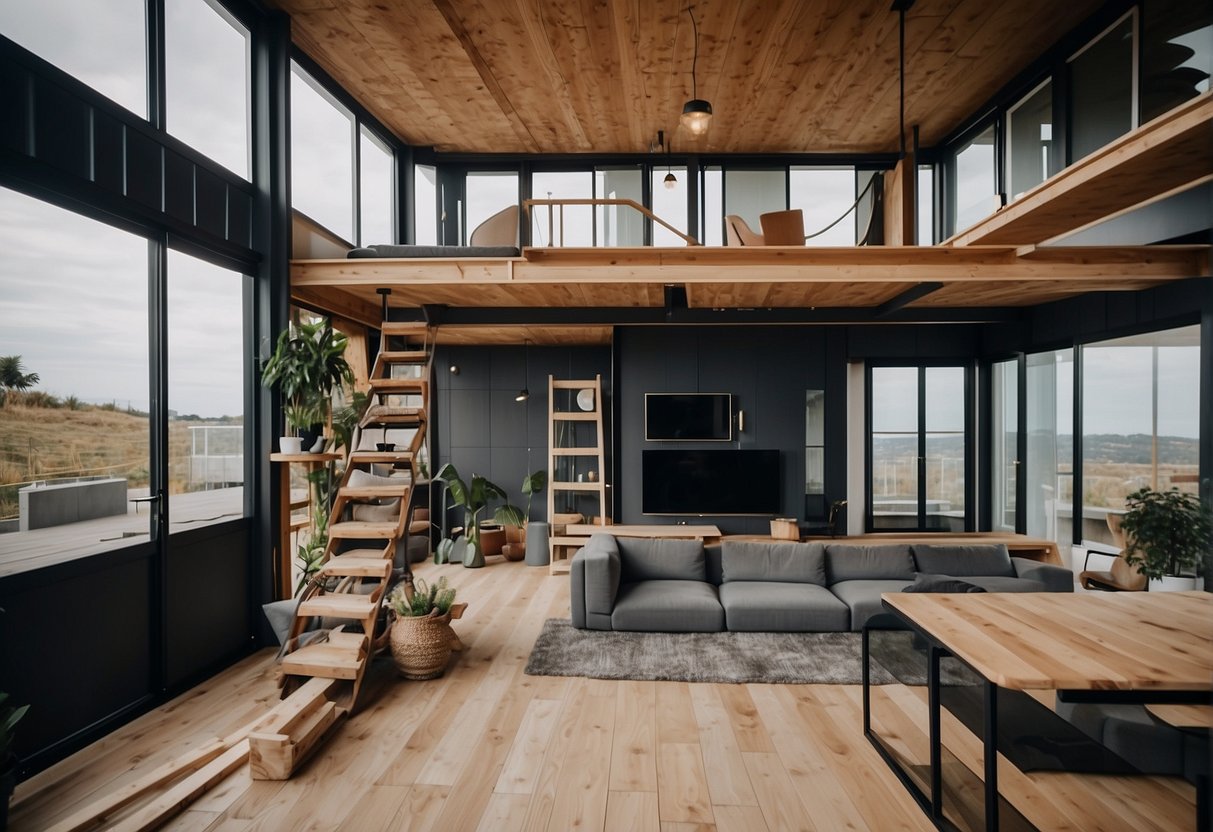
In the realm of shipping container homes, finishing touches on both the interior and exterior are crucial for functionality and aesthetic appeal. Choices in materials and design can greatly influence the livability and character of the home.
Exterior Features and Modifications
Windows: The installation of windows plays a pivotal role in natural lighting and ventilation. Strategic placement can enhance the energy efficiency and illumination of a container home. It is essential to reinforce openings with proper framing to maintain structural integrity.
Roofing: Opting for durable and weather-resistant roofing materials can protect the home from the elements. Sloped roofs are preferable for efficient drainage, and adding a green roof can provide excellent insulation and sustainability benefits.
Interior Design and Customization
Interior Design: The interior should maximize space and reflect personal taste. Clever built-in storage solutions maintain an uncluttered aesthetic. Selecting light colors for walls and ceilings can make the space feel larger, while bold accents can add personality.
Customizing: Container homes offer a blank canvas for customization. Unique features like retractable walls, modular furniture, and customized lighting fixtures can tailor the space to the homeowner’s needs and preferences. It is important to consider both form and function during the design process.
7. Dealing with Challenges
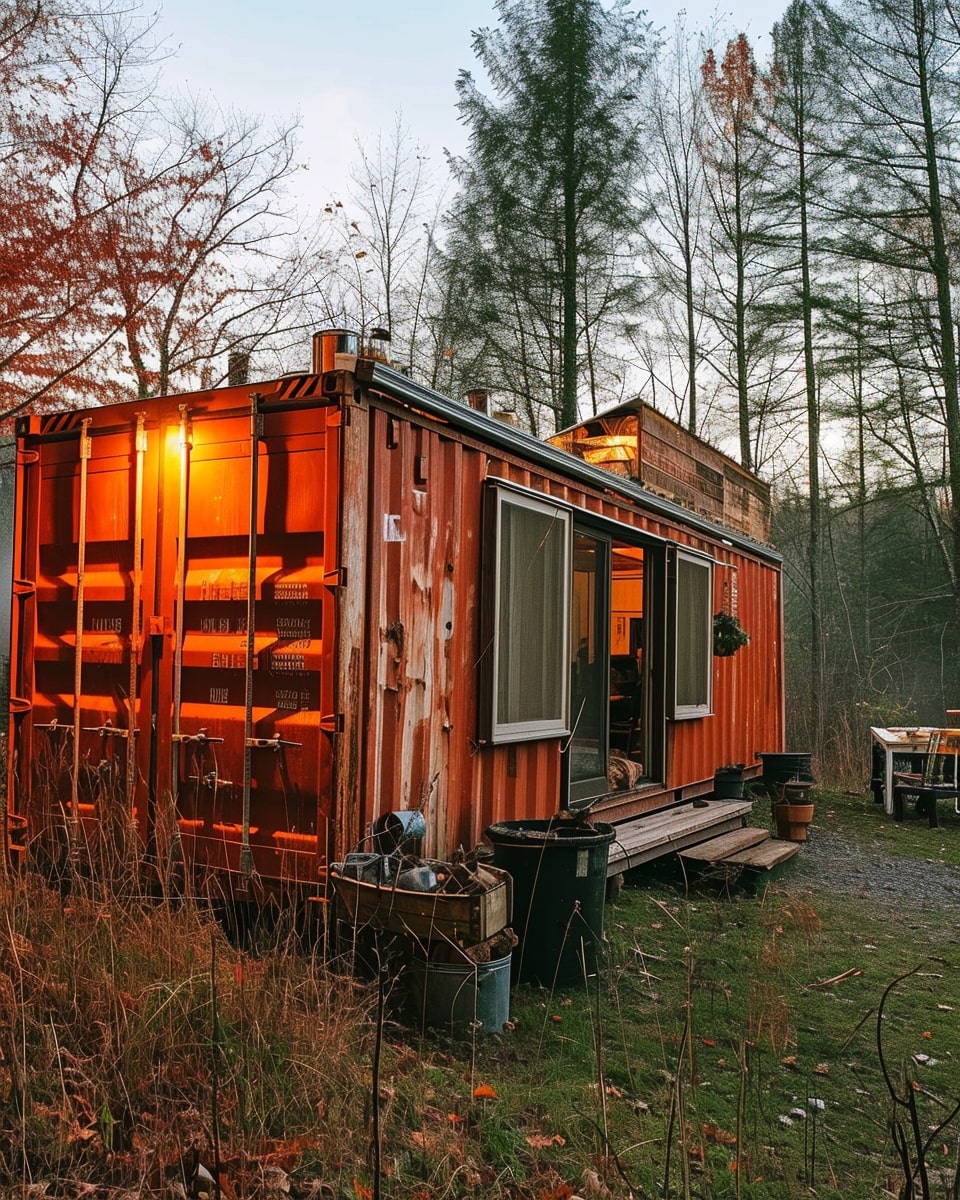
Building a shipping container home comes with a unique set of challenges. Navigating these difficulties requires preparation, understanding of the materials, and a willingness to adapt to various conditions.
Overcoming Construction Challenges
Construction challenges often arise due to misunderstandings of the material’s characteristics and local building regulations. For instance, understanding the durability and limitations of containers is essential. Shipping containers, while sturdy, can have issues such as rust or dents that may compromise structural integrity. Furthermore, incorporating insulation is critical for habitability, but this reduces interior space and requires careful planning to maintain livability.
- Inspection: Prior to purchase, one must inspect the container for any signs of wear and negotiate remedies.
- Permits: Thorough research of zoning laws and building codes in the area will save legal headaches later on.
- Mistakes to Avoid: Skimping on the foundation can lead to long-term structural problems; thus, ensuring a solid base is paramount.
Adapting to Harsh Conditions
Container homes need to withstand a variety of harsh conditions, from extreme weather to noisy environments caused by wind. Strategies for coping with these aspects include:
- Weatherproofing: Container homes must be properly sealed and insulated to protect against extreme temperatures.
- Wind: In windy locales, create windbreaks with vegetation or other structures to minimize noise and weather impacts.
Clearly, container homes require consideration for challenges not typical of traditional construction. Adequate planning and informed approaches make these challenges surmountable.
8. Compliance and Safety
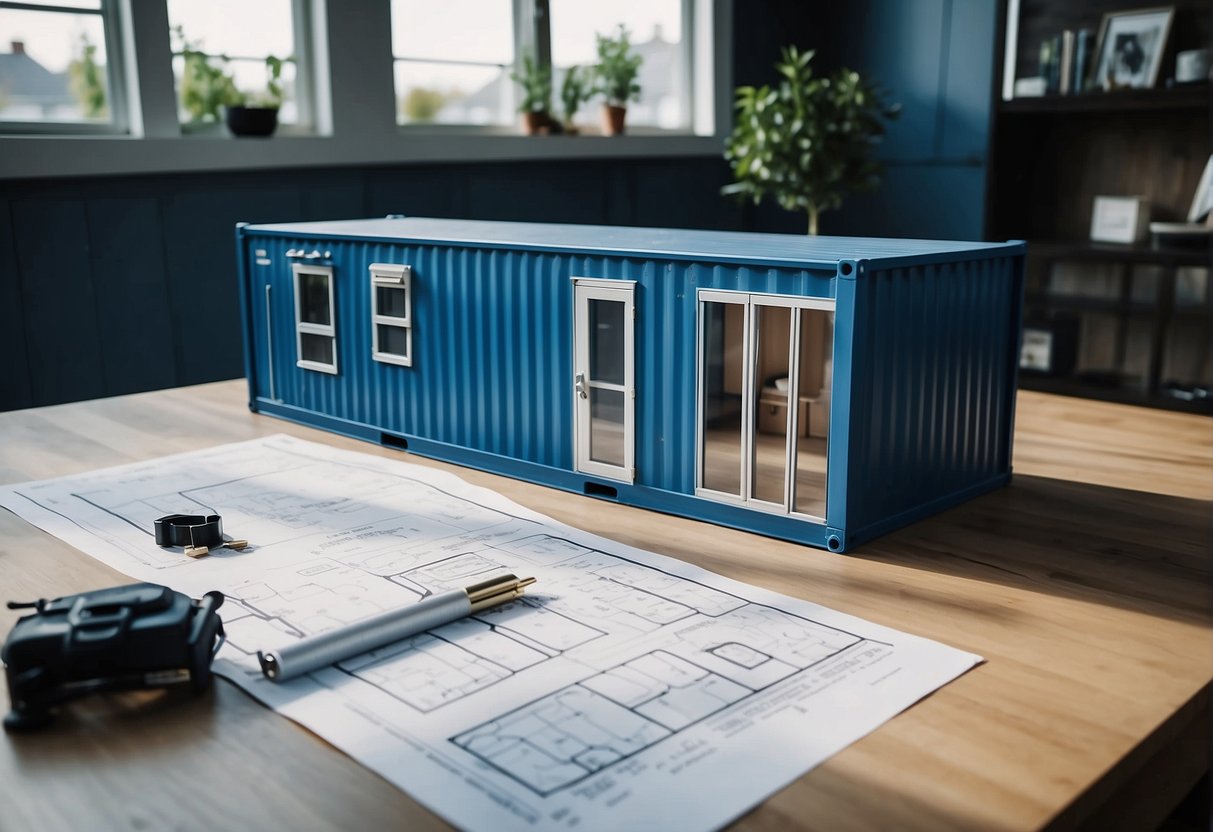
When undertaking the construction of a container home, strict adherence to compliance and safety protocols is indispensable. Not only do these regulations ensure the structural integrity of the home, but they also guarantee the wellbeing of its occupants.
Understanding Building Code and Zoning Laws
Building Code: Container home builders must consult the local building codes that outline specific safety standards and construction practices. These codes address crucial aspects such as fire safety, electrical systems, and sanitation. Builders should obtain a copy of these codes and familiarize themselves with the requirements unique to their project.
- Zoning Laws: Zoning regulations dictate where a container home can be constructed and used. These laws vary by locality and can impact factors like the home’s placement, size, and the density of the area. Prior to purchase or construction, owners are encouraged to check with their local zoning office to avoid future legal complications.
Working with Experts and Inspections
Experts: Collaboration with professionals like a structural engineer is essential in assessing the suitability of containers for habitation and ensuring modifications comply with safety standards. Moreover, these experts can provide valuable insights into enhancing the design’s longevity and habitability.
- Inspection: Regular inspections at different construction stages are crucial to verify that the building aligns with safety norms. Builders should schedule these inspections in advance, maintaining a log of results and any corrective actions taken to meet the stipulated regulations.
9. Sustainability and Eco-Friendliness
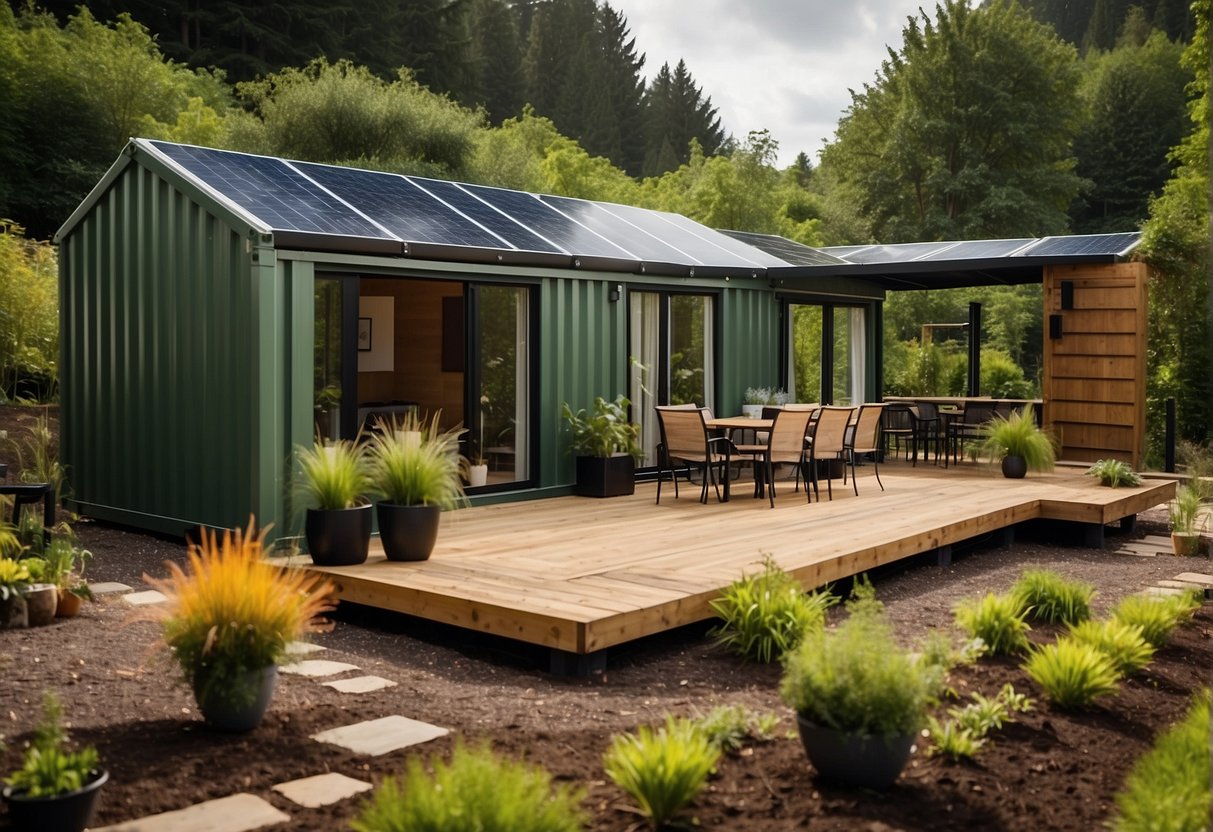
Building a container home offers unique opportunities for integrating sustainability and eco-friendliness. Residents can reduce their ecological footprint by incorporating renewable resources and minimizing waste.
Implementing Eco-Friendly Solutions
By choosing eco-friendly materials for insulation and construction, individuals ensure the longevity and energy efficiency of their container homes. Solar panels can provide clean, renewable energy, mitigating reliance on fossil fuels. Additionally, installing low-flow fixtures reduces water usage, exemplifying a commitment to water conservation.
- Insulation: Use recycled or natural materials.
- Energy: Install solar panels to harness solar energy.
- Water: Fit low-flow fixtures to conserve water resources.
Sustainable Living
Container homes naturally encourage sustainable living through their design and the lifestyle they promote. Rainwater collection systems can dramatically decrease water dependency by providing an alternative supply for non-potable needs such as irrigation or toilet flushing.
- Rainwater Collection: Utilize rainwater for irrigation and reducing water bills.
- Incorporating gardens on site not only contributes to environmental health but also promotes self-sufficiency through the growth of fresh produce.
Each of these components plays a critical role in establishing a home that is as environmentally conscious as it is habitable.
10. Final Considerations
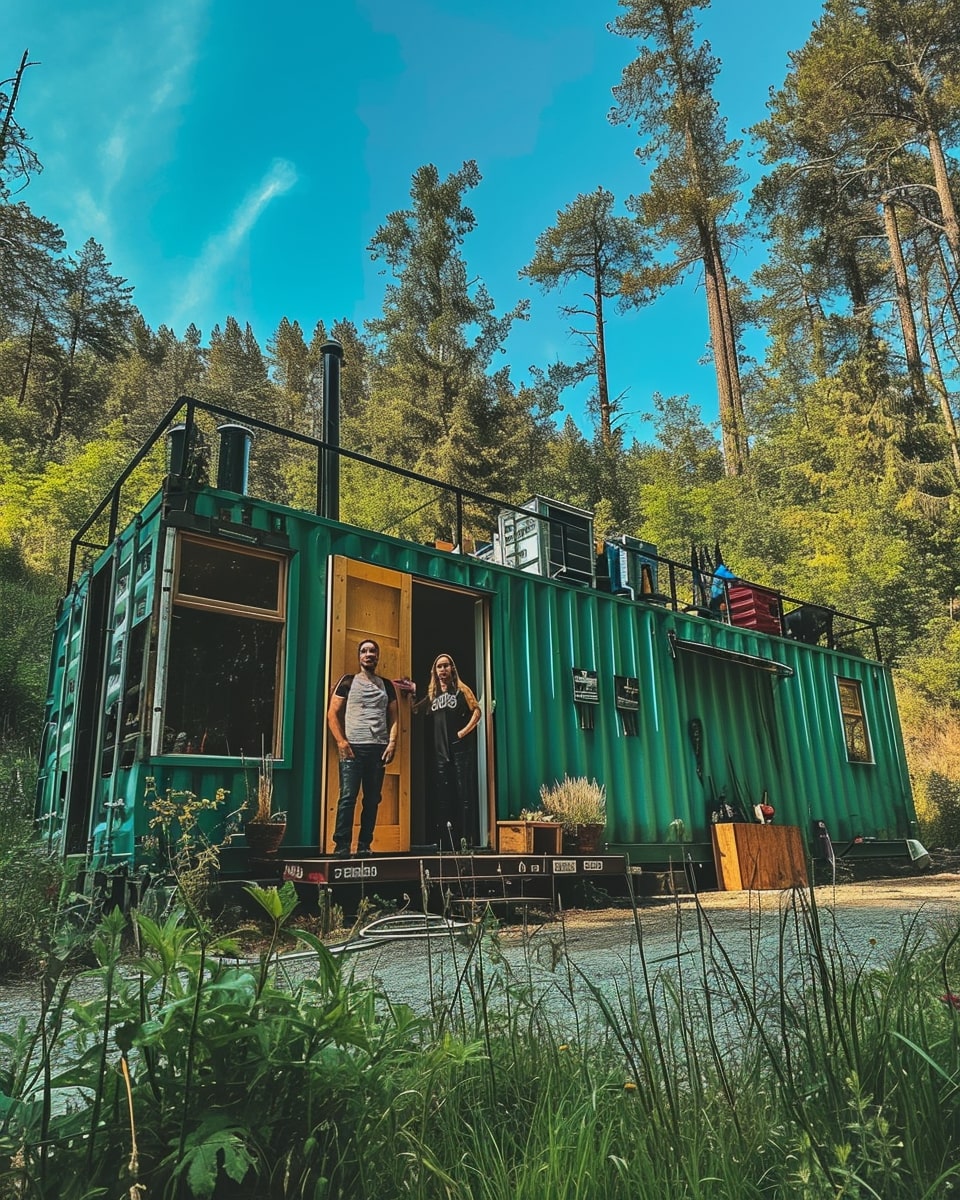
Building a container home requires careful thought about the sustainability and economic aspects over time. Attention to maintenance and assessment of the home as a long-term investment are crucial steps.
Maintaining Your Container Home
A container home’s longevity hinges on routine maintenance. It’s essential to opt for rustproof treatments, such as specialized paints and regular inspections for wear and tear. One key strategy is implementing moisture barriers to prevent condensation-related corrosion. Living in a container suggests a commitment to a low-maintenance lifestyle, yet proactive care can prevent most issues from escalating.
Evaluating Long-Term Investment
When considering a shipping container home, one must evaluate its cost-effectiveness as an investment. They typically require a smaller initial outlay compared to traditional housing, making them a savvy choice for cost-saving. Nonetheless, the true measure of their value includes considering resale potentials and long-term savings. This evaluation should be thorough, factoring in both the home’s innovative appeal and potential market challenges.
Resources and Further Learning
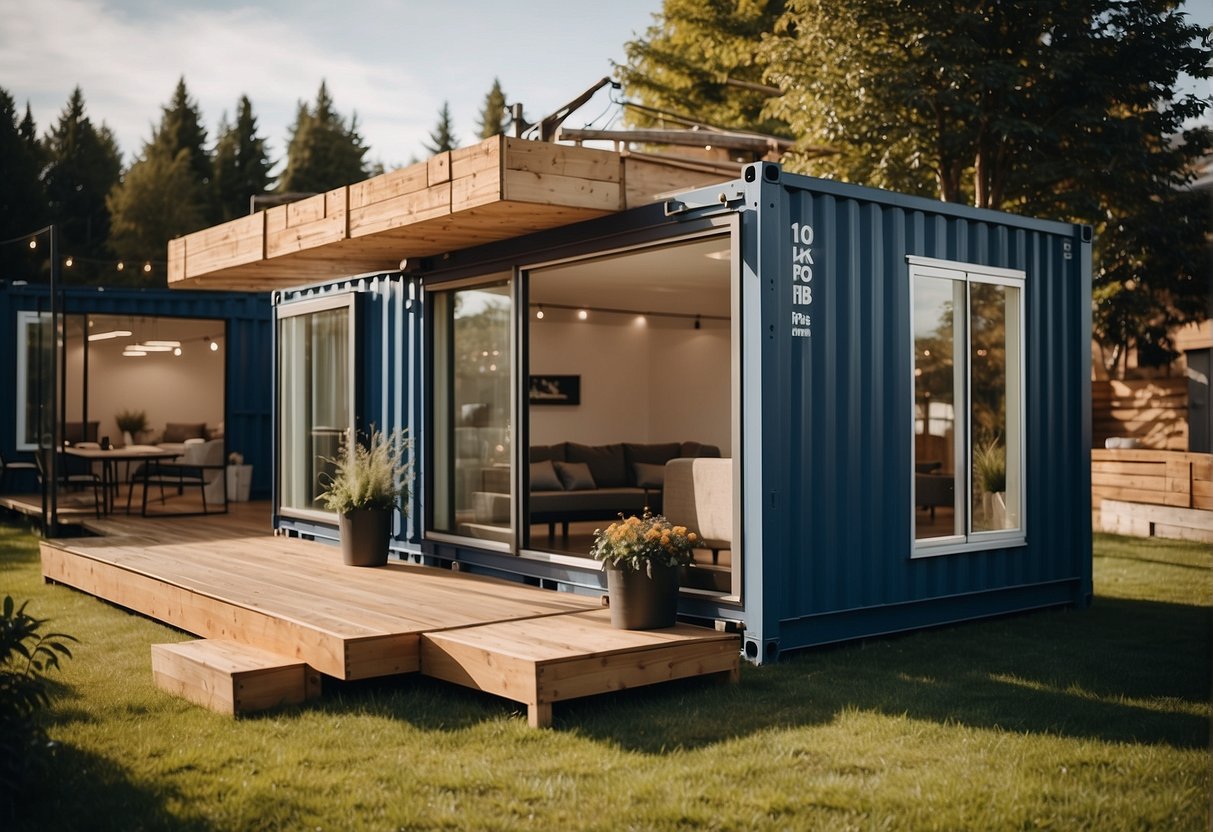
When embarking on building a container home, accessing the right resources and keeping abreast of the latest advancements is crucial. The process becomes more manageable by learning from seasoned industry leaders and staying updated with current technological trends.
Learning from Industry Experts
Industry experts offer valuable insights and practical advice for newcomers in the field of container home construction. For those looking to master sustainable living with shipping containers, there are comprehensive guides available that distill years of professional experience into actionable tips. One can find extensive advice ranging from design principles to structural integrity in sources such as Master Sustainable Living with Shipping Containers. Other professionals share their knowledge through workshops, webinars, and online courses, each of them offering a different perspective rooted in real-world application.
Keeping Up with News and Technology
Staying updated with the latest news and advancements in container home technology is essential for anyone looking to build a modern and efficient home. Publications like Archdaily offer regular updates on new design trends and construction techniques. Additionally, organizations specializing in market research, such as Allied Market Research, provide comprehensive reports that delve into market trends and forecast the future of sustainable living solutions. By following these updates, one can make informed decisions about materials, design, and construction methods.
Conclusion
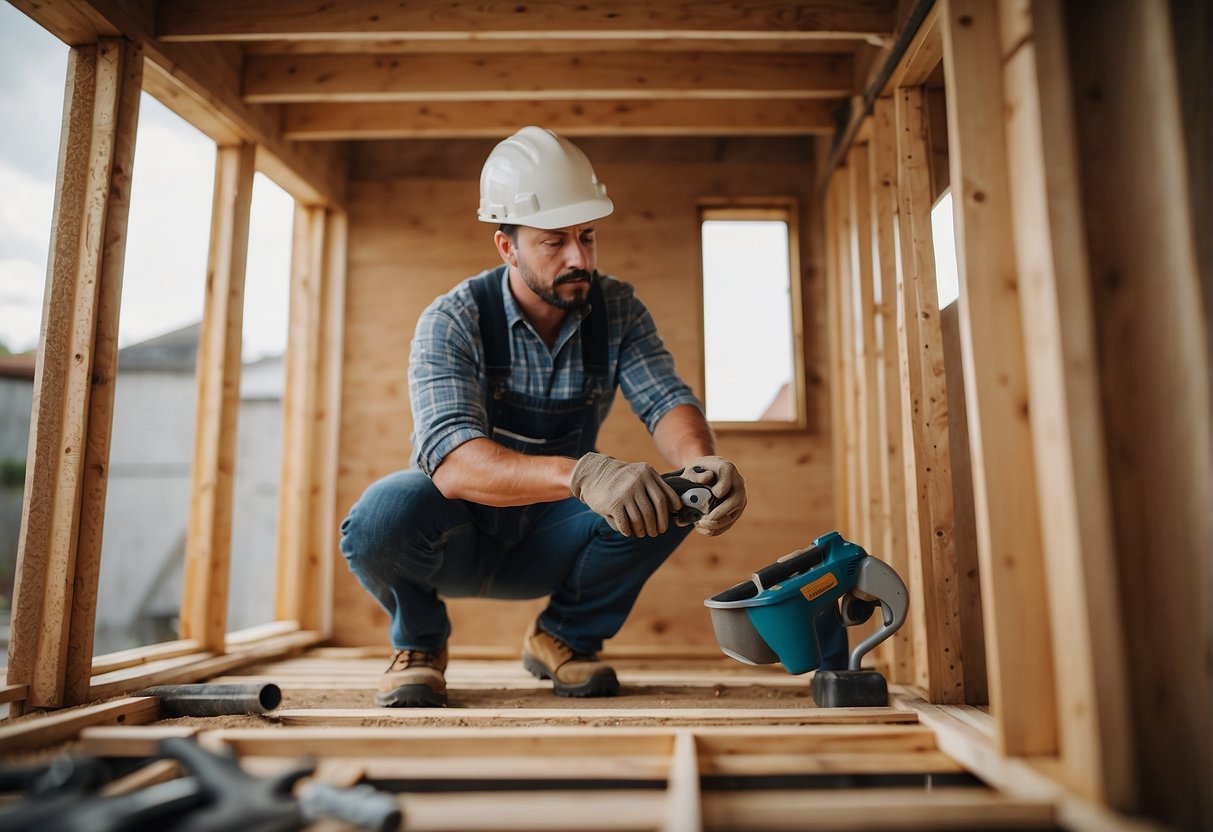
Building a shipping container home is an innovative and sustainable choice that requires careful planning and consideration. Interested individuals should prioritize research and planning to ensure code compliance and efficient design. It’s essential to select the right containers, understanding that quality varies and not all containers are suitable for conversion into homes.
Site preparation and design considerations play pivotal roles in container home construction. Owners must account for utilities and systems, ensuring their container home is well-equipped for residential use. During the construction phase, attention to detail is key when modifying containers to suit living requirements.
Interior finishing and landscaping are the final touches that transform a container into a comfortable, aesthetically pleasing home. As for legal matters, one must verify that the project aligns with local regulations and that all required permits are obtained. Furthermore, issues such as insurance and liability must also be addressed.
For those committed to eco-friendliness, sustainability and eco-friendly practices should be integrated into the design and construction process. Whether it’s through energy-efficient appliances, solar panels, or rainwater harvesting systems, every green choice contributes to the sustainability of the project.
In conclusion, with the right approach and thorough preparation, one can effectively navigate the complexities of building a container home. They will likely find the experience rewarding and end up with a unique and sustainable home tailored to their personal needs.
